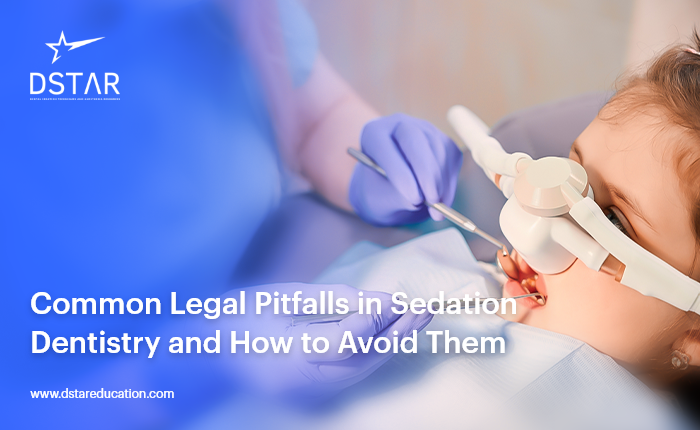Did you know that up to 50% of children experience anxiety during dental visits, leading many to avoid necessary care?
This statistic underscores the critical need for sedation in pediatric dentistry, which helps ease children’s anxiety and enables dentists to provide the required treatments. But sedation in children requires more than just a simple procedure—it demands specialized knowledge to ensure safety and efficacy. This is where Sedation Recertification in Pediatric Dentistry becomes invaluable.
In this blog, we’ll discuss the significance of Pediatric Sedation Recertification, the types of sedation used in dental practice, and how sedation recertification can enhance both patient safety and the quality of care. We’ll also explore the benefits for dental practitioners.
Why Pediatric Sedation Recertification Matters
Children are not small adults, and their responses to sedation can differ significantly from adults. This difference makes it necessary for pediatric dentists to undergo specific training in sedation techniques that are tailored to children. Sedation Recertification equips dental professionals with the knowledge they need to assess the risks, administer the right dosage, and manage any potential complications.
Without recertification, dentists’ risk improper sedation that could lead to over-sedation, under-sedation, or even severe complications during treatment. Recertification ensures that dentists understand the delicate balance needed to keep a child calm without compromising their safety (Joyful Smiles Dentistry) (Reading Pediatric).
What Does Pediatric Sedation Recertification Involve?
Achieving Pediatric Sedation Recertification involves a comprehensive training process. Dentists learn to safely administer various sedation levels – ranging from minimal sedation with nitrous oxide to deeper sedation methods such as oral or IV sedation. Recertification programs typically cover:
- Pharmacology of sedatives used specifically in pediatric dentistry.
- Patient monitoring techniques to track vital signs and detect any adverse reactions.
- Emergency preparedness for addressing rare but serious complications such as allergic reactions or respiratory distress. (Lincoln Children’s Dentistry).
These training programs also emphasize the importance of individualized care, taking into account each child’s unique medical history and anxiety levels.
Types of Sedation Used in Pediatric Dentistry
Pediatric dentists can use several sedation methods depending on the complexity of the procedure and the child’s anxiety level. Here are the most common types of sedation used in pediatric dentistry:
- Nitrous Oxide (Laughing Gas): This is the most commonly used form of mild sedation in pediatric dentistry. It calms the child without causing drowsiness, allowing them to remain awake but relaxed (Joyful Smiles Dentistry).
- Oral Sedation: This method involves administering liquid medication before the treatment to induce a mild to moderate state of sedation. It’s typically used for more anxious children or longer procedures (Reading Pediatric).
- IV Sedation: Reserved for more complex cases, IV sedation is administered directly into the bloodstream, offering deeper sedation. This method is especially useful for children who are unable to cooperate during extensive dental treatments (Lincoln Children’s Dentistry).
- General Anesthesia: In rare cases, such as extensive dental surgery or in children with severe developmental issues, general anesthesia may be necessary. Under this method, the child is completely unconscious throughout the procedure (Reading Pediatric) (Lincoln Children’s Dentistry).
The Benefits of Sedation Recertification for Pediatric Dentists
Obtaining Sedation Recertification is more than just a regulatory requirement – it can transform the quality of care and open numerous benefits for both dentists and their patients.
- Increased Patient Safety: Recertification ensures that dentists are fully prepared to monitor a child’s vital signs and address complications if they arise. This greatly reduces the risks associated with sedation (Lincoln Children’s Dentistry).
- Improved Patient Experience: Certified pediatric dentists are better equipped to make visits less stressful for children. This can improve cooperation during treatment and foster a positive association with dental care, which is key to long-term oral health. (Reading Pediatric).
- Broader Treatment Capabilities: Recertification allows pediatric dentists to offer a wider range of services, including treatments that require deeper levels of sedation. This can increase the efficiency of treatment and reduce the need for multiple visits (DOCS Education).
- Enhanced Trust and Confidence: Parents are more likely to feel at ease knowing their child is in the hands of a dentist who has specialized training in pediatric sedation. This trust can lead to stronger relationships and long-term patient retention (Lincoln Children’s Dentistry).
Continuing Education and Regulatory Compliance
While Pediatric Sedation Recertification unlocks opportunities for dentists, maintaining certification requires ongoing education. Dentists need to remain informed with new sedation methods, medications, and safety protocols to ensure they are providing the most effective care. Many states also require continuing education for sedation recertification, making it important for dentists to remain current on regulatory requirements (DOCS Education).
The Impact of Sedation Recertification on Pediatric Dentistry
The availability of safe, certified sedation in pediatric dentistry has far-reaching implications. It not only allows children with high anxiety, behavioral challenges, or special needs to receive necessary care, but it helps prevent the development of dental phobias later in life. By fostering positive experiences in the dentist’s chair, Sedation Recertification is a tool that promotes lifelong oral health (Lincoln Children’s Dentistry) (DOCS Education).
Moreover, the ability to offer sedation can elevate dental practice by attracting a wider range of patients, including those who specifically seek out practices offering sedation for children. As dental practices evolve, recertification in sedation becomes an increasingly valuable asset.
Conclusion
The role of Sedation Recertification in Pediatric Dentistry is often overlooked but important in providing safe, effective care for young patients. With the right training, dentists can offer a calm, comfortable dental experience for children while ensuring their safety. As the field of pediatric dentistry continues to grow, sedation certification remains a key component in improving patient outcomes and enhancing the overall dental experience.
 Take Free TSBDE Anesthesia Jurisprudence Practice Exam Now!
Take Free TSBDE Anesthesia Jurisprudence Practice Exam Now!












